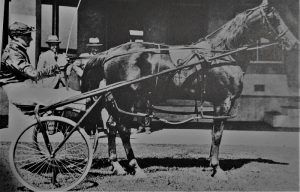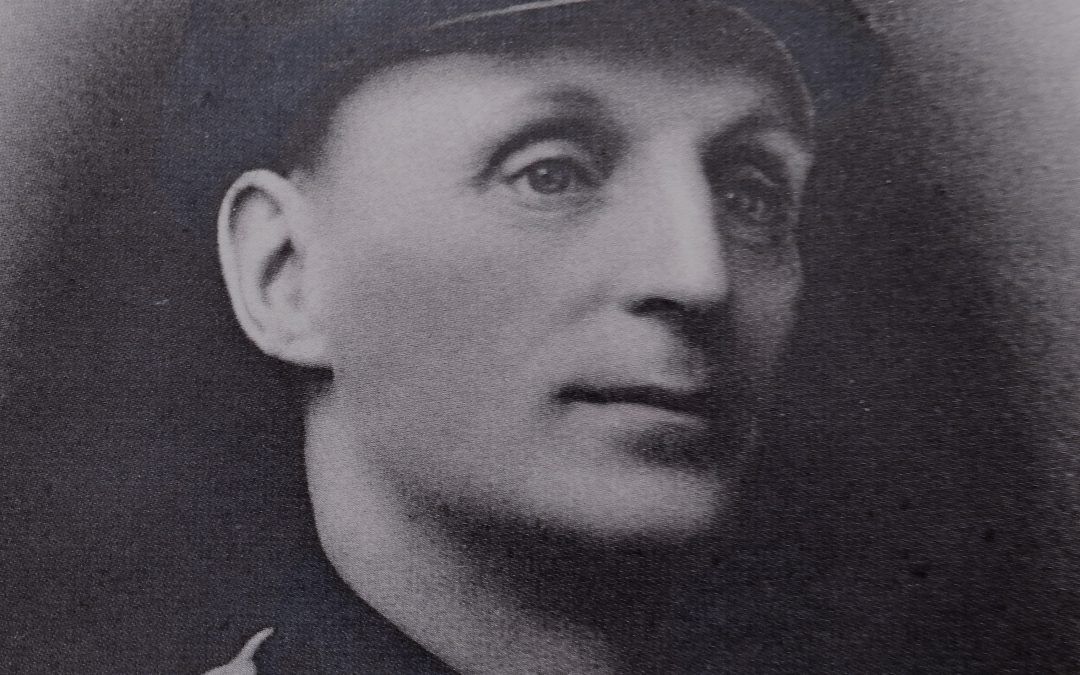There is one word to sum up the impact of a small group of families who emigrated to New Zealand from Scotland early in the 20th century.
That word is “amazing”
These immigrants and their descendants have won a dominating percentage of trainer premierships since records were officially kept -more than half- and even more when the unofficial statistics that preceded them are counted.
Scots descendants of pioneers featured strongly in the stats of the 1890’s and early 1900;s but the real revolution began in earnest when James Bryce arrived in Wellington in 1912 with a family, two horses, a few hundred pounds and an ambition to train trotters.
A successful trainer in his home country where stakes were poor; and most horses worked between shafts during the week and raced at weekends on tracks only about 600m around, he had only heard about the success of trotting here from a settler who had returned to Glasgow.
A daring enterprise became more so when James went to pick up the two mares he had had shipped out. Shipwrecked initially, they were then incredibly swept off the deck of the ship on which they were travelling in a storm – then swept back on by the next wave ! They spent the rest of the voyage in slings.
One of the mares,Our Aggie,would become the Bryce ‘bread and butter’ on the track here and then leave the last of the 6 NZ Cups won from the Bryce stable,Red Shadow.
Early on in her New Zealand career the handsome dark brown mare-one of the few racing here of all American blood at that time- had won a race at New Brighton wide out by a distance estimated by the media as a length and a half only to be placed second.No stipe reviews then.
Our Aggie,bred in Ireland oddly enough, and imported to Scotland by Bryce, left 7 good winners from 8 named foals, and one a champion.
James took over a “dirty and unkempt” stable in Woolston and impressed onlookers with the polish he quickly applied to that and to his few horses.
He was soon appointed private trainer to Ronald and Mabel Duncan of Coldstream Lodge,Fendalton, then the harness racing/breeding showplace in the city on the Clyde Rd-Fendalton Rd corner .
Bryce trained and drove the latest Duncan superstar King Cole,Australasian mile record holder,in the 1913 Cup but the start was a shambles and an erratic KIng Cole took no serious part.
Amazingly, within 2 years Bryce would have trained more than half that field at one time or another. His turnover of horses in that era,mostly top winning animals, set records as owners sent their stars to a stable in the seeming hope it was more like the Holy Grail.
Anxious to train on his own account James finally settled on a Hornby property he would make a showplace,the biggest and best stable in the country, known as Oakhampton Lodge. The All Stars of its day.
At one stage he was reported to have nearly 70 horses on his books- more than many stables of today- and now they have at least 10 times the race opportunities. A big stable then was less than 20 horses.
Bryce led the industry here into a more professional training system in just a few short years.
He went for big numbers but turned them out in a condition owners admired. He was an expert driver, big feeder, worked his horses strongly; introduced the equine swimming pool; had acres of painted white fences and, especially, a busy travel schedule.Bryce helped build trotting into a glamour sport and a strong rival for thoroughbreds in Canterbury.
The main difference in his training regime was how even his top line horses fined down in condition versus an English tradition here that they be big and burly for their best.
To cater for his big team Bryce attended most northern meetings in spite of the travel difficulties and often won three and four races on the day with them.Once, after doing just that, he caught a train and boat back from Auckland (a day and a night) , worked his three Cup horses at Addington on the way home then and entrained a racing team for Oamaru and points further south.
Travel was such that finally “The Scotsman” as he was known set up the first satellite stable, at Epsom away back in the early 20’s managed by his son Andy. Another son,Jimmy, drove many a stable star and won a drivers premiership in the 1930’s. All three drove NZ Cup winners.No major race escaped them.For years they ruled the roost.
The two boys also won the inaugural Australasian Trotting Championship of 1925, the forerunner of the Inter Dominion,going all the way to Perth with two horses. Great Hope, the 1923 NZ Cup winner, came out on top over Taraire.

Great Hope after NZ Cup 1923
As an aside, the boys sold Taraire there to defray some “unforeseen “ expenses much to their father’s displeasure. He probably felt worse the following year when he made the trip instead -and the Bryce horse was beaten in the final by Taraire.
The Bryce NZ Cup record, set in 1933 with his homebred Red Shadow, was not equalled until Lord Module’s 1979 win brought Cecil Devine the same tally -and not beaten until 2020 when Self Assured gave Mark his seventh win. Nearly 90 years is a long time to hold a Cup record.
Bryce won 8 premierships in 9 years. He had the biggest team and the best facilities but the Andy Pringles,Free Holmes and Manny Edwards’s etc,all considered industry leaders at the time, were outgunned- though locals soon set about imitating Bryce’s scope and methods.
It was a revolution but it wasn’t plain sailing. Bryce appeared at times to struggle to supervise his vast operation.One of his diversions, “renting” horses for pre-training purposes to city cab drivers, landed him in legal difficulties.He had other trials with officialdom and the financial success of his operation seemed often in the balance.James was a focussed, serious man and at times treated the betting public carelessly though that was not unusual then. But his expertise with a good horse swept all before him.
With him came Bobby Dunn, a top horseman in his own right who would later leave Oakhampton Lodge and train for Roydon Lodge, the showplace successor to Oakhampton operated by another Scot, J R McKenzie.He also trained privately for the booming Santa Rosa Stable;Percy Watson of the Purple Patch family fame; major Waikato owner Wilfred Johnstone and assorted other owners,ending his career in Auckland.
Then the Kerr family arrived having an association with James Bryce.
The Kerrs split between thoroughbreds and standardbreds.In the latter David Kerr who shifted to Gore, was a leading southern trainer for many years. His brother,Jim,was a successful rider and trainer at Riccarton who also rode in saddle trots.And his son, David, had a Group 1 thoroughbred training career with stars like Canterbury Belle.
Earlier Alex Fleming who trained several exceptional horses, had emigrated from Scotland but initially gone farming. He then became a self taught professional trainer following success as an amateur owner-trainer in his younger years. He was runner-up to the Bryce stable in premierships more than once.Scotsmen everywhere.
Four of the winning drivers on one day at a Cup week meeting at Addington in 1917- half the card-all hailed from Glasgow.Two Bryces,Dunn and Fleming.
Likely on hearing of the Bryce success other Scottish horsemen soon followed. George Cameron,for several years at the celebrated Brooklyn Lodge stables at New Brighton was one to make his mark.
In 1920 came Joseph Liddell Purdon with his family. He was not a professional trainer as such in his early years- a large family to maintain was probably a major reason- but soon became closely allied with trotting,selling diet additives and later stood a stallion at stud in Prebbleton.
The family set up a long- held base in Spreydon and several trained or drove. Joe snr’s son, Alex, the leading trainer of 1954,and Glasgow- born is the last northern hemisphere born harness trainer to win the premiership,George Noble and Natalie Rasmussen being Australians to have subsequently achieved the feat. The rest of the Purdon family then emerged and have dominated the premiership in most years since.
Later still in 1930 came Jimmy Young and his master reinsman son, Bob (he actually came here first).They made an instant and lasting impression on Kiwi harness with a host of top line performers,especially trotters including Inter Dominion Champions and Dominion Handicap winners.
Jimmy Young had operated a track in Scotland and had a big stable there.
Studmaster and trainer Sam Ballantyne was the last of the Scottish stars to try his luck in this country, and also with success, starting in the 1960’s.
Of course there were many other Scots- descended horsemen who would make their impression on the local harness scene.They seemed to have a special affinity with standardbreds.
Jimmy Young was a plain spoken man. Don Nyhan once recalled that when he won a standing start mile race at Addington with Johnny Globe coasting to the line in 2.01.2 to conserve energy, he was taken aback when the veteran Scotsman gave him an “expletives deleted” earful in the drivers room about missing a golden opportunity to break 2 min for a mile stand, then not achieved. He may have been right.The only time the great horse broke the barrier was against time on grass from a moving start.
The fact that many of our training premierships go to the credit of Scotsmen who came off basically a few boats from Glasgow is historically quite phenomenal.
What is even more significant is just how long that influence has lasted.
PIC: JAMES BRYCE the revolutionary
